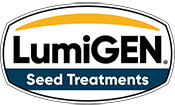Monitoring Soybean Cyst Nematode HG Types in the Eastern Corn Belt
Agronomy Research Update written by Mary Gumz, Ph.D., Pioneer Agronomy Sciences
Agronomy Research Update written by Mary Gumz, Ph.D., Pioneer Agronomy Sciences


ILEVO® is a registered trademark of Bayer. Components of the LumiGEN® system for soybeans are applied at a Corteva Agriscience™, Agriculture Division of DowDuPont production facility, or by an independent sales representative of Corteva Agriscience or its affiliates. Not all sales representatives offer treatment services, and costs and other charges may vary. See your sales representative for details. Seed applied technologies exclusive to Corteva Agriscience and its affiliates.
The foregoing is provided for informational use only. Please contact your Pioneer sales professional for information and suggestions specific to your operation. Multi-year and multi-location is a better predictor of future performance. Do not use these or any other data from a limited number of trials as a significant factor in product selection. Product responses are variable and subject to a variety of environmental, disease, and pest pressures. Individual results may vary.